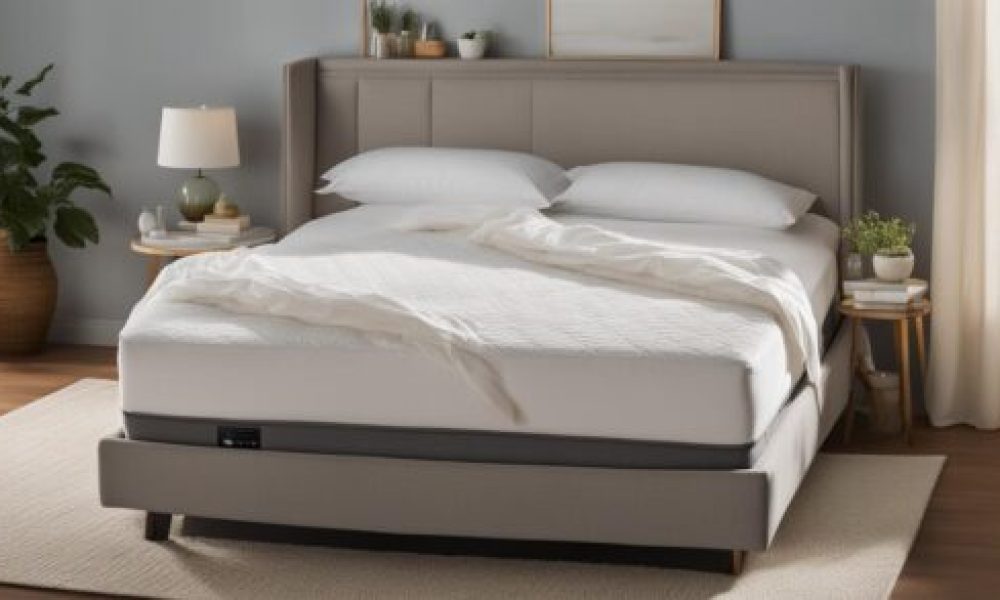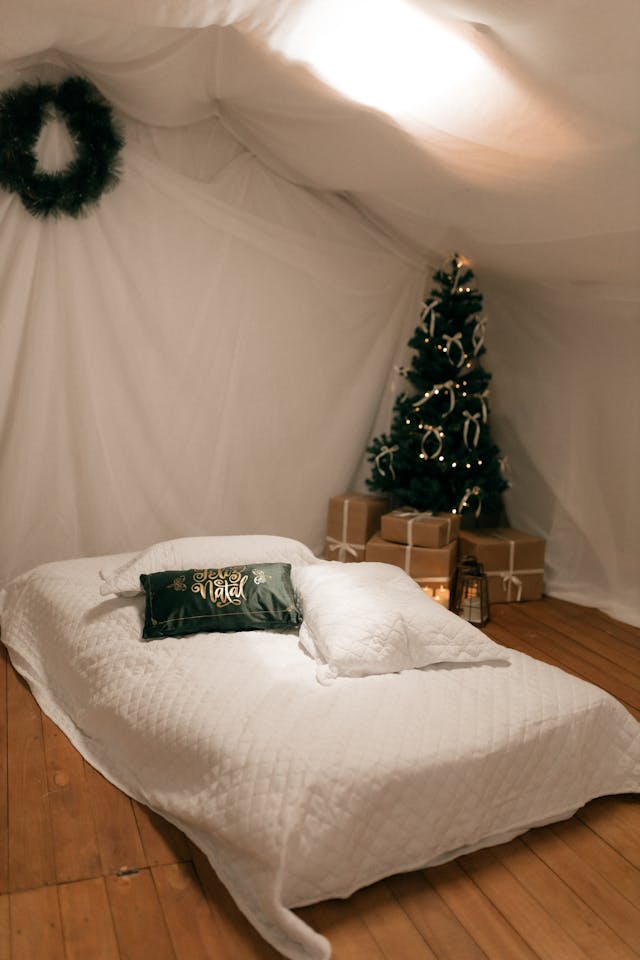Natural Mattress Cleaning: Eco-Friendly, Chemical-Free Tips for a Fresh Bed
Maintaining a clean mattress is essential for a healthy sleep environment. Discover eco-friendly, chemical-free methods—using baking soda, vinegar, and essential oils—for natural mattress deodorizing without harsh chemicals.
Key Takeaways
- Natural, non-toxic mattress cleaning with baking soda and vinegar is affordable, effective, and safe for most beds.
- Answer-first care: vacuum, spot-treat, deodorize, then thoroughly air-dry to prevent moisture issues and dust mites.
- Use an eco-friendly mattress protector to block stains and make ongoing, chemical-free maintenance easier.
Understanding Your Mattress Type
Before cleaning, identify your mattress type to ensure compatibility with natural, chemical-free methods. Different materials react differently to moisture and may require specific precautions.
- Foam Mattress: Sensitive to moisture—use minimal liquid and ensure ample ventilation to prevent mold or mildew.
- Latex Mattress: Naturally hypoallergenic and resistant to dust mites; favor gentle spot-cleaning over heavy saturation.
- Hybrid Mattress: Check the manufacturer’s care guide; treat foam layers cautiously and keep drying airflow high.
- Innerspring Mattress: More tolerant of light misting; great candidates for baking soda + vinegar routines.
When in doubt, refer to care labels or the manufacturer’s website. You may also find our
mattress accessories guide
helpful for ongoing organic mattress care.

Step-by-Step Natural Cleaning Guide
Cleaning your mattress naturally isn’t complicated. With a few pantry staples, you can refresh and deodorize without synthetic fragrances or irritants.
- Strip the Bed: Remove bedding (pillows, sheets, covers). Wash in hot water to reduce bacteria and dust mites.
- Vacuum Thoroughly: Use an upholstery tool on the surface, sides, and seams to lift dust and allergens.
- Apply Vinegar Solution: Mix equal parts distilled white vinegar and water in a spray bottle. Lightly mist stained areas. For brighter sweat stains, add a small amount of lemon juice. For protein-based stains (like urine), a cautious dab of hydrogen peroxide (test first) can help.
- Natural Deodorizer: Sift baking soda over the surface. For extra freshness, mix a few drops of lavender or tea tree essential oil with the baking soda before applying for a subtle, organic mattress freshener.
- Let It Work: Leave for 4–6 hours (overnight is best) so baking soda absorbs odors and moisture.
- Vacuum Again: Remove all residue slowly to capture fine powder and embedded particles.
- Air Dry: Promote airflow with a fan or open windows. Ensure the mattress is fully dry to discourage odors and dust mites naturally.
This chemical-free mattress cleaning routine is safe to repeat every few months, or as needed after spills and pet accidents. For more technique tips, see this Good Housekeeping guide.

Cleaning Under the Bed
The space under your bed can accumulate dust bunnies, pet dander, and clutter that affect air quality. Keeping this area tidy supports your non-toxic bedroom routine and helps with natural dust mite prevention.
- Vacuum Weekly: Use a slim nozzle to reach corners and baseboards—especially helpful for allergy-friendly mattress care.
- Dust Bed Slats: Wipe wood or metal slats with a slightly damp cloth to reduce ongoing dust fall.
- Organize Storage: Opt for sealed bins rather than open boxes to minimize dust accumulation.
A clean under-bed area complements your eco mattress cleaning habits and keeps odors at bay. Learn more from Better Homes & Gardens.

Benefits of Using a Mattress Protector
A protector is your first line of defense for natural mattress deodorizing and stain prevention. It simplifies maintenance and keeps the sleeping surface fresher between deep cleans.
- Barrier Against Stains: Blocks coffee, sweat, and accidents from reaching the core.
- Improved Hygiene: Helps reduce allergens—ideal for allergy-friendly mattress cleaning.
- Easy Maintenance: Most are machine-washable; look for eco-friendly mattress protectors in organic cotton or bamboo.
See our Mattress Protector Buying Guide for materials and fit tips, plus additional organic mattress cleaner options.
Assessing Mattress Age and Maintenance
Not sure whether to refresh or replace? Use these cues to guide your organic mattress care plan.
- Visible Wear: Sagging, lumps, or indentations indicate declining support.
- Your Sleep: If you wake sore or stuffy, consider a deeper clean or replacement—especially if you need allergy-friendly mattress care.
- Typical Lifespan: 6–8 years for many beds; premium models can last longer with consistent, chemical-free maintenance.
Routine cleaning, rotation, and a protector stretch usability. Learn more about longevity in our article on
mattress accessories,
and compare with Sleep Advisor’s independent
mattress replacement guide.
Professional Cleaning Services
Deep stains or lingering odors? Consider a pro. Many companies now offer eco-friendly mattress cleaning services tailored to sensitive households.
- Deep Cleaning: Steam or dry methods to tackle dust mites and stubborn spots.
- Convenience: Ideal for busy schedules—maintenance remains natural and low-effort between visits.
- Non-Toxic Options: Request plant-based, chemical-free solutions safe for kids and pets.
For a breakdown of options, see our overview of DIY vs professional mattress cleaning, then browse local providers on
Angi.
Embracing natural mattress cleaning keeps your sleep space fresh without harsh chemicals. With baking soda, vinegar, and essential oils—and a good protector—you’ll maintain a cleaner, healthier bed the organic, non-toxic way.
FAQ
- How often should I clean my mattress naturally?
- Aim for every six months; quarterly if you have allergies, pets, or night sweats. Regular vacuuming and baking soda natural mattress deodorizing help control dust mites.
- Can I use baking soda and vinegar on all mattress types?
- Generally yes, but always check care instructions—especially for memory foam and latex. For sensitive covers, try a store-bought organic mattress cleaner spray and test in a hidden spot first.
- What if my mattress has a strong odor?
- Sprinkle baking soda liberally and let sit overnight, then vacuum slowly. Add a few drops of essential oil to the baking soda for a light, chemical-free scent.
- Is it necessary to use a mattress protector?
- Yes—an eco-friendly mattress protector prevents stains and makes ongoing, non-toxic mattress cleaning much faster.
- When should I consider replacing my mattress?
- If it sags, causes discomfort, or is over 8 years old, evaluate replacement vs. a deep clean. Persistent odors or allergies may also warrant a new mattress with better dust mite prevention.























